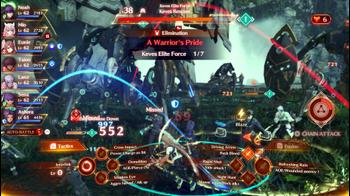
Xenoblade Chronicles 3 Review
If there is one thing that has remained consistent about Monolith Soft since its founding over two decades ago, it’s the studio’s immense ambition in game design and storytelling - no matter what their target platforms are. They have gradually become one of the most revered developers in the Japanese RPG community with the Xenosaga trilogy, the Baten Kaitos duology, and the crossover strategy RPGs that brought a ton of gaming legends together in Namco X Capcom and the two Project X Zone installments.
Of course, their greatest success is with their RPG series that has lasted for 12 years now - Xenoblade.
Admittedly, I am deeply fond of all the Xenoblade titles that have been released thus far, but I am willing to accept that each game is far from perfect. There are various aspects of each that are often irritating, needlessly obtuse, or downright tedious. Monolith Soft does so much to make them great, yet they also implement some systems in frustrating ways that are significant enough to dampen the overall experience.
Whether it is the gem crafting system from the first Xenoblade Chronicles, the barren main storyline in Xenoblade Chronicles X until its finale, the Field Skills from Xenoblade Chronicles 2, or even the Community system that gatekept main story progression in Xenoblade Chronicles 2: Torna ~ The Golden Country, there always seems to be a handful of annoying quirks in each Xenoblade game. Obviously, these few bits I pointed out aren’t the only things I find vexing about them, and others may have different grievances. The point is, I generally love each of the Xenoblade games in its own way, but there has always been something in each that has been remarkable enough to hold them back from absolute greatness to me.
Each entry has been a stepping stone for Monolith Soft, though.
After years of inventing, iterating, reinventing, reiterating, and refining systems throughout the series, Xenoblade Chronicles 3 feels like the ultimate title Monolith Soft has been striving towards. This next entry in the Xenoblade series honors the legacy of all the Xenoblade titles that have come before it. Although it may exhibit, streamline, and combine many mechanics in previous titles, it manages to forge its own identity and blazes a new path in one of the most impressive Japanese RPGs I have ever played.
I will keep this review of Xenoblade Chronicles 3 as spoiler-free as possible, though keep in mind that some minor story elements will be mentioned to explain the gameplay loop of what players will be doing. No significant story revelations or reveals will be spoiled here, so consider this the final warning before I delve into it.
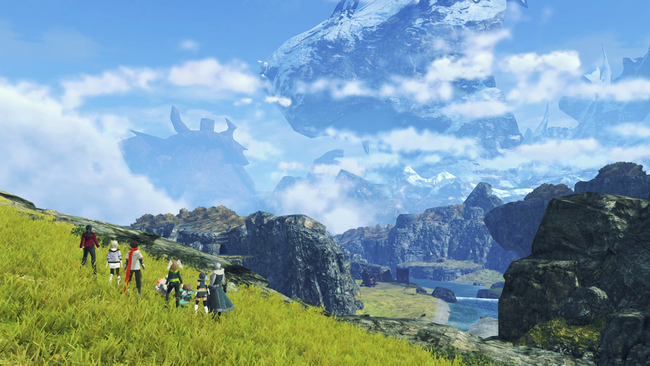
Right off the bat, I think Xenoblade Chronicles 3 is the longest game in the series on a first-time blind, thorough playthrough. I completed as much of it as I could find before wrapping it up, and when I hit credits, I was over 143 hours in. It is an absolutely massive game filled to the brim with content; I was shocked because I thought it’d be roughly the same size as Xenoblade Chronicles 1 and 2, but Monolith Soft dared to dream bigger.
Players find themselves in the grim world of Aionios, a land filled with endless war from top to bottom between the two massive nations of Keves and Agnus. In order to stay alive, it is imperative that troops from each side must kill each other to reap the life energy from the opposition’s dying bodies. Besides food and water, keeping Flame Clocks sufficiently “fed” with life energy is a necessity in order to continue living; murdering is as natural as eating and sleeping.
As introduced in the game’s opening, the people of Keves and Agnus are all clones that have a fixed lifespan of ten years. Upon each person’s death, whether in battle or at the end of their ten-year lifespan, they are artificially reborn in pods, though the people themselves are unaware of that. I have previously covered the basic premise in much more detail with my Xenoblade Chronicles 3 preview a few weeks ago, so I urge you to give that a quick read if you want to know more, since there is a lot more to say about the game beyond that.
The six main characters in Xenoblade Chronicles 3 come from both nations; Noah, Eunie, and Lanz are from Keves, while Mio, Taion, and Sena are from Agnus. Early on, both sides investigate a mysterious third-party signal leading to a chance encounter. Things swiftly escalate as their fierce face-off is interrupted by Guernica Vandham, an older man that is part of a mysterious group not affiliated with either Agnus or Keves. Before he is able to explain the “real enemy” that they should be fighting, a fearsome foe who declares themselves as ‘Moebius’ butts in and overwhelms everyone.
After a series of dramatic events that challenges the worldviews of the main cast of characters, circumstances have forced them to set aside their differences and journey together towards a place Guernica mentioned that could help them out - a rumored “city” located at the enormous sword impaled somewhere in the world of Aionios.
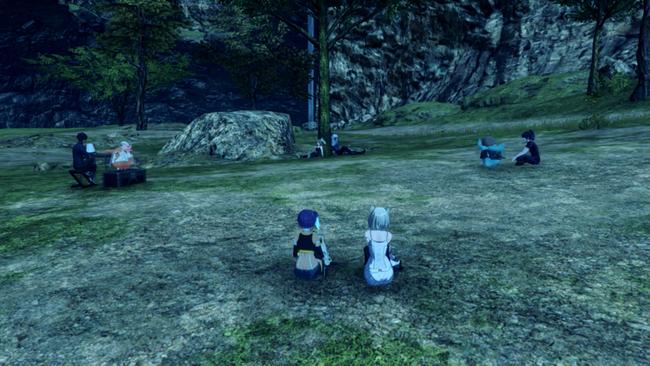
Xenoblade Chronicles 3 takes an interesting approach relative to most other JRPGs when it comes to its party system. Noah, Mio, Eunie, Taion, Lanz, and Sena always stick together once they all officially join after the game’s initial chapter. All of them are unlocked and fight battles all together throughout the game. Therefore, Xenoblade Chronicles 3 side-steps the common JRPG problem of having a party character join late into the game and feel “underdeveloped” or “rushed” in their characterization because the game’s conclusion is right around the corner at that point. These characters and their relationships with each other are given ample time to be explored thoroughly and thoughtfully.
One of the bigger changes that Xenoblade veterans will notice is that this title does away with the Heart-to-Heart mechanic from previous entries. Heart-to-Hearts were optional character interaction scenes, separate from the main story, that were unlocked behind advancing character affinities with one another. In Xenoblade Chronicles 3, there is no affinity mechanic, and sequences that may have been a Heart-to-Heart event in previous games are now naturally baked into the main narrative and side quests.
This has allowed Monolith Soft to surface how these characters interact and develop with each other in a more natural manner than ever. Dialogues between the cast often feel less stiff or generic, because it isn’t a gameplay mechanic that has to be unlocked and activated in a specific spot. Xenoblade Chronicles 3 is full of small, meaningful moments between characters that flesh out the cast further and take the developments shaped from these interactions into the main story.
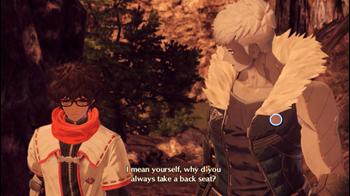
How character relationships in Xenoblade Chronicles 3 are depicted and handled are some of the best I have seen in a RPG yet. There is a certain level of nuance in line delivery and body language that sell the believability of these friendships growing over time. These moments aren’t simply “exposition dumps” or characters describing the backstories for the sake of the player - these moments feel like genuine ‘heart to hearts’, without a baked-in mechanic.
For instance, a situation that is troubling Eunie is noticed only by Taion because he’s the observant type. Instead of rudely asking Eunie what is disturbing her out in the open when she is trying to hide her vulnerability to others, Taion brews her a herbal tea to calm her nerves at a campsite that night. He doesn’t attempt to engage or press her on the matter because he has come to learn that isn’t the type of situation Eunie is comfortable with sharing. Instead, Taion tries to help her in a more subtle method that communicates to Eunie that he is there for her without having to outright say it for players to understand.
Xenoblade Chronicles 3 ensures that everyone in the main cast gets multiple moments to show who they are and celebrate the unique bond they have made throughout their adventure. As just one example, Sena develops a sisterly bond with Eunie, a wholesome friendship with her fitness buddy Lanz, and a somewhat slightly envious connection with Noah because Mio opens up to him in ways she doesn’t to her. These connections are not isolated behind optional scenes that are missable and truly make the characters memorable.
I love the casts of all the prior Xenoblade titles, but I think Xenoblade Chronicles 3 might just be my favorite out of them yet. Monolith Soft has crafted intriguing chemistries between the six main characters, and it was a delight seeing how they interacted throughout the game. I can’t speak highly enough just at how amazing this new cast is.
Like most of the previous installments, Xenoblade Chronicles 3 takes awhile to get going. Its first 12-15 hours are filled with tutorials and has taken steps to ensure it won’t make the same mistake that its predecessors did. There is an abundance of step-by-step tutorials for exploring the world, navigating the menus, and explaining every aspect of the battle system in great detail, so players will be locked down in what they are able to do in the first several hours. It feels like a direct response from how poorly the tutorials were laid out in previous games.
As I mentioned in my preview, every single tutorial in Xenoblade Chronicles 3 is stored in the Tips section in the options menu; any tutorial that covers the specifics of battle can also be manually replayed as a Training Drill that is added right after a player completes the initial tutorial introducing it. If a player accidentally forgets how to do something in the game, there are various in-game resources to refresh their memory on it now. In New Game+ playthroughs, these step-by-step tutorial sections are no longer mandatory.
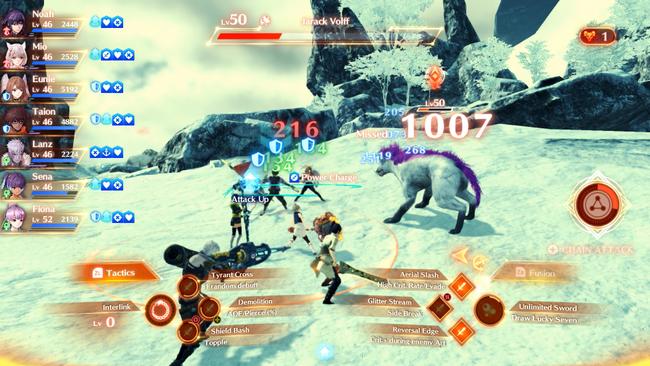
Battles in this entry are an odd evolution because it combines aspects of the combat systems from the entire Xenoblade Chronicles series to create something strangely compelling, despite how busy and overwhelming it can look and feel at first.
Before diving into the nitty gritty of what’s different in it, the basics of Xenoblade combat are still intact here. Combat encounters are seamlessly transitioned into right from the field and characters perform a basic auto-attack when they are standing still in range of the enemy. The battle HUD is familiar to Xenoblade Chronicles 2’s style with Arts - the combat skills in the Xenoblade series - occupying each corner of a diamond.
Several Arts grant bonus effects if a character is in front, behind, or to the side of a foe so being in the correct position is vital - like in prior Xenoblade titles. Xenoblade Chronicles 3 displays unique icons in the heat of battle to indicate whether the character that the player is currently controlling is in range to execute auto-attacks and also what their position is relative to the targeted enemy. It is immensely helpful because battles are often very visually busy with special effects popping off every second.
Another returning battle mechanic from past Xenoblades are the combos that disrupt the enemy’s attack pattern with the Break and Topple status effects. Players can inflict Break from several Arts which will interrupt what the enemy is doing briefly and they, or another character, can follow it up with an Art that inflicts Topple causing the enemy to fall down for a few moments. From there, an Art that has the Launch or Daze property can fling a toppled enemy straight into the air or keep them on the ground stunned for even longer.
Usually in past installments, Daze would be the final “ender” for that branch while launched foes can be hit with an Art that possesses the Smash property to plunge them back into the ground for massive damage. In Xenoblade Chronicles 3, a new Burst property can be executed to dazed enemies as an ender and carries different properties from the Smash ender. When an enemy is bursted, it will drop additional materials and if it is currently in an enraged state, it will cancel that out as well.
There is a greater focus on the “holy trinity” MMO dynamic in how Xenoblade Chronicles 3 carries out combat. Prior titles definitely went in this direction too, but having all six main characters participate in every battle further reinforces how it feels like players are always in a MMO raid party with everyone having a strict role to carry out. At the start, the party consists of two attackers, two tanks, and two healers. Color-coded aggro lines are displayed in battle giving players an easy indication on which character each foe is targeting at any given moment. Blue lines convey that a foe is locked onto a tank, while red lines communicate that an attacker or healer currently has the attention of the enemy.
With the basics laid out, here is where Xenoblade Chronicles 3 becomes its own beast.
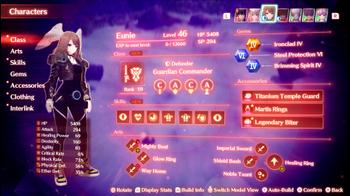
It borrows a little bit of Xenoblade Chronicles X with its in-depth, versatile job system, though it is somewhat more reminiscent of how Final Fantasy V handled it. The six main characters all start with their own “default” class and shortly after their adventure begins, they gain the ability to swap into their respective Ouroboros partner’s job initially. Each character then gradually starts to unlock other classes the more they fight alongside a character that has that job equipped.
Every job has a set of five Arts; only three of these Class Arts can be taken into battle on the X, Y, and B face buttons. The A button is reserved for the job’s unique Talent Art, which all vary in what they do - some may fire off an extra powerful attack, some may provide healing support, and so forth. In some special cases, some characters will obtain Talent Arts exclusive to them too.
This next point will be a bit convoluted, so hang in there. As characters engage in combat, their Class Arts recharge in one of two ways; they either go through a timed cooldown or refill the cooldown by a character’s auto-attack connecting with the enemy. Players with prior Xenoblade experience will quickly notice how past games either operated with one or the other method and now, this one somehow has both.
Remember how both halves of the main cast belong to different nations? The way in which Arts recharge is dictated by where the original job wielder came from. People from Keves have their job’s Class Arts on a timed cooldown, while individuals from Agnus refill their job’s Class Arts through auto-attack hits.
Before I continue, I know several Xenoblade Chronicles 2 players are asking themselves already if “microstepping” is back in Xenoblade Chronicles 3 to recharge Arts that rely on auto-attacks faster. This technique cannot be exploited in this game because auto-attacks all have a single standard canned animation for each hit, instead of the small handful of unique animations that constructed the three-part auto-attack combo chains in the prior title. Plus, there is a universal windup to an auto-attack coming out though there is an equippable gem that can reduce the gap between each auto-attack. Regardless, players will be interacting with both Arts’ recharge methods frequently rather than choosing one or the other.
As characters stick with a job, they will rank that job up. At certain ranks, all of their Class Arts will enhance their parameters simultaneously with improved damage, faster cooldowns, and so on. Almost all of the classes don’t have to worry about needing to use a specific Art again and again to upgrade it; this will all come naturally as the character ranks them up.
Jobs not only have Class Arts, they have Master Arts as well. Master Arts are transferable Arts that stick with a character, even if they change to another job. The catch is that Master Arts from a Keves job can only be equipped on an Agnus job and vice versa. In other words, if a character is on a job with Class Arts that operate on a timed cooldown, the Master Arts available to them only recharge through auto-attack hits. As a character levels up a job, it will unlock more Master Arts to transfer over to other classes too. Master Arts occupy the left half of the battle UI and just like Class Arts, only three of them can be taken into battle; these are fired off with the up, right, and down buttons on the D-pad.
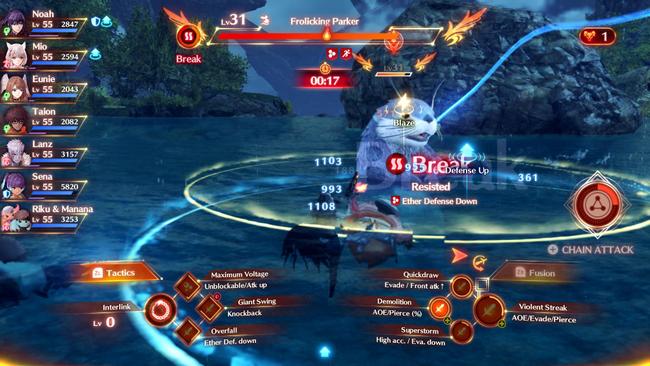
Eventually, players will be juggling between 3 Class Arts, 3 Master Arts, and a Talent Art in combat. The face and D-pad button that players assign them to is also an important factor to consider because of Fusion Arts. These allow characters to simultaneously execute a Class Art and Master Art once the Arts on the corresponding face and D-pad buttons have been recharged.
Fusion Arts, well, fuse the effects of both Arts into a single attack; if a Fusion Art consists of a Class Art that inflicts Break at an enemy’s side with a Master Art that decreases the enemy’s physical defense, then the Fusion Art will cause a Break and physical defense reduction in one fell swoop rather than firing the two off separately - though players can certainly choose to do that instead, if they want to.
Arts canceling, the act of canceling an Arts’ recovery animation to initiate another one immediately, is fairly restrictive early on. Auto-attacks can cancel into single Arts that can then be canceled into a Fusion Art or Talent Art. There is a certain item players will obtain later that allows them to cancel Arts into each other freely to help speed up the flow of battle.
One of the final pieces in Xenoblade Chronicles 3’s battle system is the Ouroboros mechanoid form itself. As people get further into the game, they will eventually unlock the Ouroboros function for the main six in combat and can be activated by pressing left on the D-pad. These have certain pairs (Noah/Mio, Eunie/Taion, Lanz/Sena) fuse during a fight with a new set of Arts that players can configure like Class Arts.
Ouroboros forms do not have lifebars so they cannot “die”, but they operate on a heat timer that builds up the longer they stay in it. Eventually, each of the three Ouroboros gains a second form that can be switched back and forth during the Ouroboros fusion. Overheating the fusion locks players from fusing for a certain amount of time and manually undoing it has a shorter cooldown.
In order to get the most out of Ouroboros fusions, players can raise an Interlink level in combat before fusing their characters into their Ouroboros form. The higher the Interlink level before they fuse, the longer they last in the fused form. Many of their Arts receive bonus effects if they are also at a certain Interlink level too; using Fusion Arts constantly drives Interlink levels up faster.
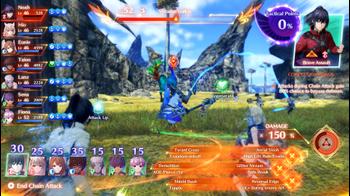
Chain Attacks further supplement the already complex battle system in Xenoblade Chronicles 3. Its specifics are not too complicated, but it does take some time to get used to - on top of everything else. A lot of enormous damage sequences can be gained by mastering it, like the Chain Attack systems in its predecessors, though the way players go about it in Xenoblade Chronicles 3 is completely different and rewarding. It slows down the pace of battles into a more turn-based approach with a very slight deckbuilding aspect to it.
Even though Xenoblade Chronicles 3’s battle system feels immense, the game does a great job introducing its layers step-by-step throughout several hours. It lets people play around with certain sub-sections of its mechanics for a while before piling more and more into the mix. I was surprised that no aspect of battles has a QTE element to them, since that was pretty much a staple of the series until this point. A part of me misses it, though battles are busy enough without them.
Aside from the six main characters all participating in combat, a seventh Hero party member can hop in as well.
These Hero characters cannot be manually controlled, and their equipment loadout is largely set in stone; people can still tinker what Class Arts they use, though they have no Master Arts because they are unable to switch off of their unique job. Players can only change the accessories of Heroes in post-game. Over a dozen Heroes can be recruited and they are all discoverable through exploring different parts of Aionios. While the Heroes are somewhat reminiscent of the Rare Blades in Xenoblade Chronicles 2, Xenoblade Chronicles 3 does not have a gacha-like system, and instead these Heroes will be unlocked either in the main story or in side quests.
After completing the quest for a Hero to join the party, one of the six main characters will also inherit the Hero’s class automatically and can immediately switch to it. Other characters can unlock the Hero’s job if they either fight alongside the Hero in battle more and/or fight with the main character in that specific Hero’s class, which will further expand the repertoire of options available to players in how they want to customize their party.
Although Heroes fall under the attacker, tank, or healer role, many of them bring different utilities to combat. One class wields a flag that specializes in buffing the entire party, while another consumes a character’s HP to deal devastating attacks. There is even a job that doesn’t follow the same universal “rules'' as the rest of them and has its own dedicated set of tutorials to understand it.
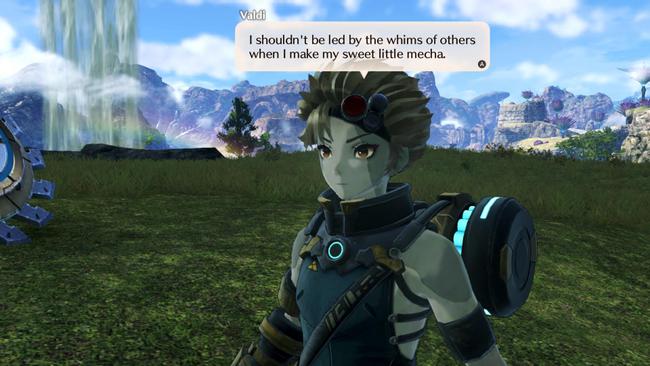
The entire battle system in Xenoblade Chronicles 3 gives players so much flexibility in how they want to tackle it from party building, skill management, and choosing what role they want to play in fights. People can even swap who they are controlling on-the-fly in the middle of combat, if they want to manually manage a specific role for certain fights.
It surfaces an intriguing choice for people in how they want to play the game and what they value. If they like controlling a specific character, that character will most likely be cycling through roles as they rank up different classes so sticking with a single character will often result in seeing them go through being an attacker, tank, and healer. On the other hand, “maining” an attacker, tank, or healer role will naturally encourage people to take control of different characters constantly.
Each character learns jobs at a different pace too. When a character hovers over a job, there will be a letter grade assigned to it; that doesn’t mean they will perform poorly or unfavorably with it. Instead, all that grade indicates is how fast they will level up that class. Characters are in no way, shape, or form hampered performance-wise by playing on a “low grade” class for them.
Characters constantly change what they are wearing as they switch jobs. Each class has a unique outfit that their corresponding Hero wears. The six main characters will often not be in their default outfits normally, though players can transmogrify them to wear outfits from a job they have previously learned.
Every job will initially start with a rank cap of 10, but can later be expanded to a final cap of 20 by completing side quests with that job’s Hero character. The starting jobs of the six main characters can be upgraded with special Side Stories that contain meaningful and relevant story beats that flesh out their characterization
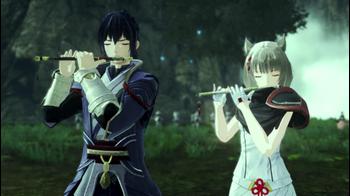
Gem crafting makes its glorious return in Xenoblade Chronicles 3, though it is far more streamlined and much simpler than its iteration in the first Xenoblade Chronicles. These are trinkets that raise certain stats on a character and up to three of them can be equipped at once. People no longer have to worry about fiddling with character affinities or managing the temperature of the furnace; all they have to do in this entry is simply have the right materials to craft the gem and they’re good to go.
Once a gem is crafted, it will automatically be applied to all the six main party members. There is no need to craft the same gem multiple times to distribute it among them. Heroes will come with their own set of gems, so people won’t have to worry about them.
Collectable Silver and Gold Nopon Coins can be found throughout Xenoblade Chronicles 3, which can be spent in a multitude of ways, including leveling job ranks and gem craft upgrades. If players don’t want to grind out a specific job for a character, they can spend Silver Nopon Coins to level them up. The same applies with consuming Gold Nopon Coins to advance to the next level of a gem instead of materials. These Nopon Coins can be obtained in skirmishes with the side that rewards them, found in containers, awarded upon completing some quests, and dropped by some unique enemies; they can also be exchanged at a Nopon merchant for special accessories.
There is a peculiar flow to Xenoblade Chronicles 3 that caught me off-guard. After a significant story event occurs about a dozen or so hours in, the title opens up in a way that I was not expecting. This is shortly after people are first introduced to the Hero mechanic. At this point, players are given the freedom to travel back to previous areas optionally to recruit their first batch of Heroes. Several other optional locations also open up at this point as well - places you do not need to explore to progress the main narrative.
My playtime ballooned at this point because I was thoroughly exploring and uncovering every inch of the world I could. In the blink of an eye, I was well over 45 hours devouring all the optional side content I could this early on. Players who like to stay on level with story content should beware; it is pretty easy to accidentally overlevel early by exploring to the degree that I did. Bonus experience accrued from completing side quests and discovering landmarks can be optionally spent to level up on a first playthrough in rest spots. Characters cannot be leveled down until the game has been beaten once.
I admit wandering around Aionios was, quite frankly, a bit boring at first. This title does not make a great first impression as far as its environmental aesthetics go; its early areas are intentionally drab because of its thematically dreary premise - with locales like wastelands and barren valleys.
None of the environments’ visuals really caught my eye until much later; Xenoblade Chronicles 3 is a late bloomer in this aspect, but when it blooms, it is stunning. I don’t want to get into the specifics to not spoil any surprises, though I was astonished at the sheer scope and variety of some of the regions later in Xenoblade Chronicles 3.
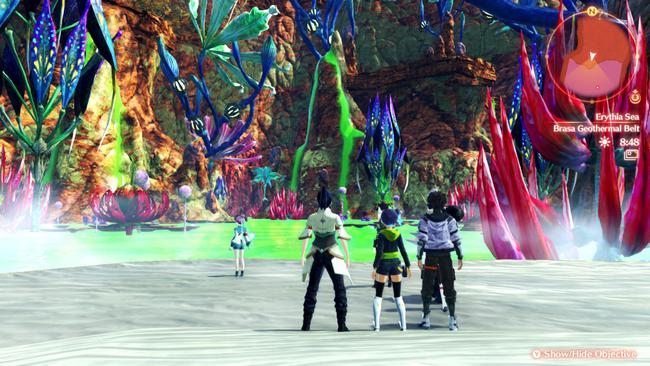
Field skills do return in Xenoblade Chronicles 3, but they are much, much more straightforward than its previous incarnations in Xenoblade Chronicles X and Xenoblade Chronicles 2. There are a grand total of four field skills in the game and half of them are obtained through main story progression, while the other half are through recruiting certain optional Heroes. The field skills do not have to be leveled up; once players obtain them, they can be freely used without any sort of catch, mechanic, or limitation attached to it.
Although its entire world is not seamless, like Xenoblade Chronicles X, some of the regions evoke some of the same feelings I did roaming around the planet of Mira. It is as if entire multiple zones and maps in Xenoblade Chronicles 1 and 2 have been surgically sewn together. There were several times that left me wondering how the Switch was able to run it. Loading times are fairly quick too when navigating from one fast travel point to the next within the region; they are slightly a tad longer when navigating to a new region entirely. Overall, the loading times never felt too long or got out of hand.
The visual fidelity of Xenoblade Chronicles 3 is where it falters the most, performance-wise; Monolith Soft’s ambition, once again, comes at a cost. This game is riddled with aliasing in every corner of it and the only parts that are somewhat spared from the worst of it are its cutscenes. Anything else that has events, interactions, or action scenes play out in the world are filled to the brim with noticeable jagged edges.
Visual image quality takes a nosedive often during battles as the adaptive resolution kicks in to maintain a stable framerate. It will be a common occurrence for character models to just turn into a blurry, aliased monstrosity in busier combat encounters on bigger wide open areas. Thankfully, Xenoblade Chronicles 3 is able to maintain a stable 30fps almost all the time, though enemies in the distance do run at a lower framerate until players come closer to them. It does suffer from a few noticeable frame pacing issues when wandering around settlements that are more garnished with assets.
On the flip side, the graphical engine is a refined step-up from what was seen in Xenoblade Chronicles 2 and Xenoblade Chronicles: Definitive Edition. Improved lighting on character models elevates the cinematographic direction in ways that wowed me often. Xenoblade Chronicles 3 can get lengthy with the runtime of cutscenes in its story sequences and the visual style Monolith Soft chose for it complements the tone of these scenes beautifully; the battle choreography in a good chunk of cutscenes is also especially brilliant.
A small performance dip to note is that battles exhibit intentional slowdown to give players a moment to process when something happens in the midst of a fight. These ‘slowdowns’ can occur when aggro lines are being broken as enemies target someone else or when a foe goes through the Break, Topple, and Launch or Daze chain. It irked me for the first few hours, though I got used to it over time; I would have preferred to see a toggle option for it.
In undocked mode, Xenoblade Chronicles 3 has the most graceful transition to it compared to the previous Xenoblade releases on Switch. The sharpening filter that plagued Xenoblade Chronicles 2’s undocked image quality has been discarded. Although there is a drop in resolution, its visual fidelity and performance still largely holds together admirably. Aliasing is less noticeable due to the smaller screen size, so models seem crisper in undocked as a result.
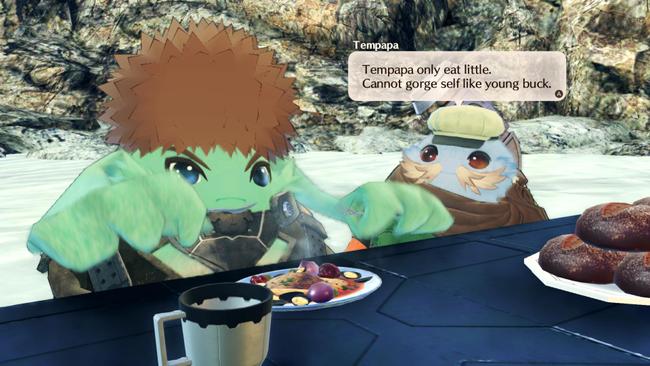
One of the most impressive elements in Xenoblade Chronicles 3 is how invested it made me with the regular residents of Aionios. As Noah and the party venture forth, they eventually discover a method to cease hostilities against them from everyone they come across. The method breaks the essential need to ruthlessly murder the people from the opposing nation to continue surviving. Thus, people all around Aionios have to find a way to thrive without the backing of their nation’s governing body and undo the urge to kill residents from opposing Colonies.
When Noah and the crew free one of the game’s numerous Colonies, the community development system from the first Xenoblade Chronicles comes into play. Colonies will bring numerous chains of side quests to the table, and more will be continually added throughout the game as more Colonies are freed. Xenoblade Chronicles 3 has a great amount of fantastic side quest storylines that explore the current circumstances a given Colony is going through. Colony residents often wrestle with existentialism from multiple angles and sometimes surface tender topics in unexpected ways. Many of the characters I’ve grown fond of in Xenoblade Chronicles 3 aren’t ones that play a major role in the main storyline but instead within their Colony’s side quest chains. I especially grew fond of several of the “second-in-command” Colony individuals that work tirelessly behind the scenes. The elaborate character affinity chart is back again to keep track of all the changing relationships for every single NPC in the game.
Continually completing a Colony’s side quests levels up the player’s affinity with them. Raising Colony levels grant affinity bonuses that can affect things like having a meal’s effects last longer, making the party’s steps more silent to prevent alerting nearby foes, or even being able to run and swim a bit faster - giving players a hard incentive to raise affinity as much as possible.
Acquiring side quests in Xenoblade Chronicles 3 is a little annoying at times though. Many are initially obtained through either eavesdropping on NPC conversations or speaking to a NPC that are both marked with a bright yellow ‘Info’ text box that people come across (if you’ve played Xenoblade Chronicles X, this might sound familiar); however, these Info texts are not marked on the mini-map at all, and sometimes you feel like you have to wander aimlessly to find them. Once the info has been obtained, the party must discuss the details of the side quest at a rest spot first in order to receive it.
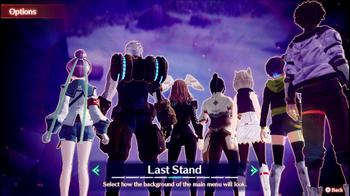
Side quests often have multiple Info fragments to collect as well and the locations of subsequent fragments are not marked on the mini-map either. Usually, those fragments are nearby, but a select few have their info fragments in more hidden spots at a Colony, or even in another separate location altogether, albeit very rarely in that instance. It is, once again, one of those minor irritating things that Monolith Soft chose to include in an excellent package that wouldn’t be such a big deal if they took the obvious solution of just marking them on the mini-map.
Several Colonies will keep on getting new side quests after certain story events unfold, though the game places the onus on players to check back on them regularly for any potential new yellow info bubbles to collect - rather than just notifying players that a Colony has new content available for them. For what it is worth, unlike in the original Xenoblade Chronicles, I don’t believe any side-event or quest in Xenoblade Chronicles 3 is permanently missable, so players don’t have to fret about missing out on locations or content simply because they moved ‘too far’ in story events.
Last but not least, the music in Xenoblade Chronicles 3 is intriguingly divergent relative to its predecessors. Though it has its share of compelling upbeat, thrilling tracks, it is largely more moody and atmospheric featuring flutes as a common central motif. It weighs in on a spiritual cadence in its sound design because much of the game revolves around themes like memento mori. With Noah and Mio’s occupations as off-seers, they often have to play their flutes to send on the voices of the departed in the countless corpses they come across.
There is a gentle somberness in its audio direction, which complements the down-to-earth tone that Xenoblade Chronicles 3 has embraced, which I’ve really come to appreciate. It rarely ever goes for exaggerated reactions or over-the-top responses on the same level as Xenoblade Chronicles 2; instead, Xenoblade Chronicles 3 works toward a careful level-headed atmosphere, even more so than Xenoblade Chronicles 1. It is not because previous approaches were “wrong” or “inappropriate”, but that type of energy just would not suit the themes of this installment.
My entire playthrough of Xenoblade Chronicles 3 was with English audio, though the Japanese audio track is available in the game without the need to download it separately. The English voices have a remarkably better direction than how they were handled in Xenoblade Chronicles 2. A lot of it is very good with a large abundance of voices fitting their characters; with so many characters and a lot of dialogue, there are perhaps inevitably a small handful of side characters and Heroes that sound off or weaker than they should at times, specifically during battle cries and quips in combat.
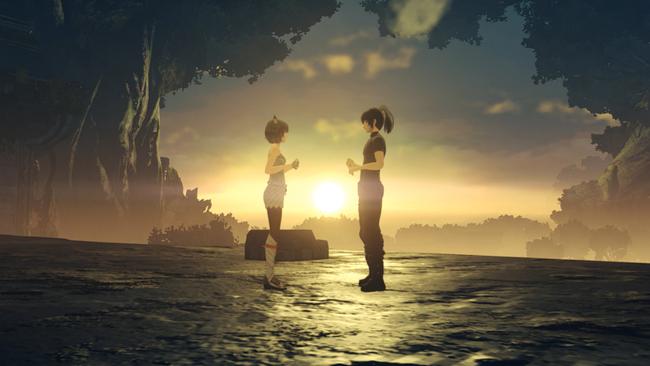
Xenoblade Chronicles 3 has become one of my favorite modern JRPGs. Aside from minor flaws in how side quests are obtained, a few narrative beats I disagree with that I can’t talk about, and frequent aliasing mucking up its visual fidelity, it is an exceptional game to experience. Very few JRPGs these days have astounded me with a core cast as well-written as this one; Xenoblade Chronicles 3 often opts for a “show, don’t tell” mentality in important moments of characterization. Throughout my 143 hour playthrough, I never thought that the game dragged its feet or was tiring itself out. The long journey is well-earned and provides enough time to see its story through in a lengthy, yet fitting, pace.
Though it borrows and evolves many of its foundations from other previous titles, Xenoblade Chronicles 3 finds numerous ways to distinguish itself from the rest. Its battle system has an ocean of depth, but it is genuinely fun to experiment with all the options it provides to players. I think the title is perfectly fine as a standalone experience to newcomers, but returning Xenoblade players will certainly be rewarded in several ways. For those that have stuck with Executive Director Tetsuya Takahashi’s grand Xeno project since Xenogears, there are numerous winks and nods in store for them too.
I strongly believe that Xenoblade Chronicles 3 is a modern JRPG masterpiece.
